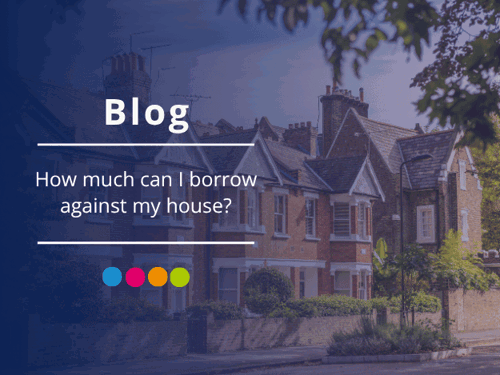
If you're looking to raise money using your home as security, there are several options available. But one of the first questions many homeowners ask is: how much can I actually borrow against my house?
In this blog, we’ll explain the main ways to borrow against your home, what affects how much you can access, and what to do if one method isn’t right for you.
How do you borrow against your house?
There are a few ways to borrow against your property, each has its own pros and cons.
1. Further advance
A further advance allows you to borrow more money from your current mortgage lender. This is added to your existing mortgage balance and repaid under new or revised terms.
This option can be cost-effective, especially if you're happy with your current lender. However, not all lenders may offer further advances, and approval depends on their lending criteria.
2. Remortgage
Remortgaging involves switching your mortgage to a new deal, often with a new lender. If you need extra funds, you could remortgage for a higher amount than your current mortgage balance and release the difference as money.
This can work well if your deal is ending. But if you’re tied into a fixed-rate deal, you might face early repayment charges that could make this option less attractive.
3. Secured loan
A secured loan, also known as a second charge mortgage or homeowner loan, is a separate loan secured against your home. This is on top of your existing mortgage.
Getting this type of loan can be useful if you’re unable to remortgage or get a further advance. Additionally, they tend to offer larger loan sizes than unsecured borrowing and are typically more flexible.
How much can you borrow against your house?
The amount you can borrow against your house depends on a few key factors:
- The type of finance you choose
- Your income and outgoings (affordability checks)
- The amount of equity in your property
- Your credit score or profile
- The loan purpose
Lenders assess these factors in different ways. For example, if you're borrowing for debt consolidation, some high street lenders may be more cautious compared to specialist lenders. However, secured loan lenders are more flexible and regularly lend for this reason, with loan amounts typically ranging from £5,000 up to £1 million.
In general, the more equity you have in your home, the more you can borrow. A strong financial position also helps.
What if one option doesn’t work?
If you’re declined for a further advance or remortgage, you may still have options:
- Try a secured loan: These lenders often accept a wider range of credit profiles and loan purposes.
- Wait and reassess: Improving your credit score or paying off some debt could improve your borrowing power in the future.
- Talk to a broker: A specialist broker can help identify which lenders are more likely to approve your application.
Summary
Borrowing against your home can be a way to access funds, whether you’re renovating, consolidating debt, or covering a major purchase. But how much you can borrow, and which method is best, depends on your circumstances, your lender’s criteria, and how much equity you have.
If you’re unsure which route to take, it’s worth speaking with a qualified adviser who can help guide you through the options and may be able to find a solution that suits your needs.
Loans are secured against property. Think carefully before securing other debts against your home. Your home may be repossessed if you do not keep up repayments on a mortgage or any other debt secured on it.




